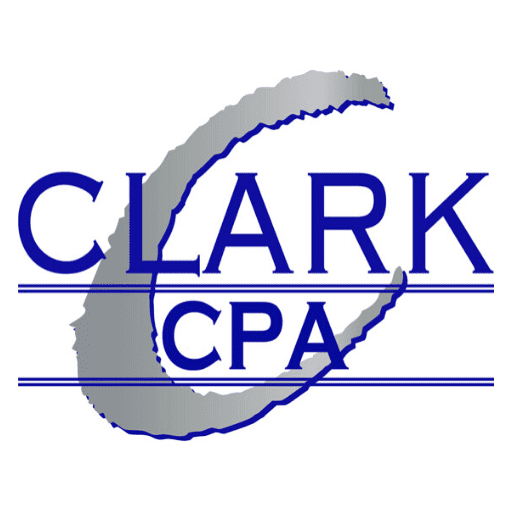Fast on the heels of passing the Families First Coronavirus Response Act (a law which ensures paid sick leave and unemployment benefits for employees affected by the COVID-19 pandemic along with payroll tax credits for affected employers), Congress passed and the President signed the CARES Act – a massive economic relief package with numerous tax breaks – on March 27, 2020.
For individuals, the most important form of tax-related relief may be the recovery rebate tax credits, which are direct payments (sometimes referred to as “stimulus checks”) the government will be making to those with income under a certain level. For businesses, key tax-related provisions include a payroll tax credit to encourage employee retention, an extension of the time for paying employment taxes, and a small business loan program with provisions for converting qualifying loans to grants (which do not have to be repaid).
The following are the key tax provisions of the CARES Act.
CARES Act Tax Relief for Individuals
Direct Payments: Single individuals and joint filers can expect to receive a payment of $1,200 or $2,400, respectively, plus $500 for each qualifying child. However, the rebate is reduced (but not below zero) by 5 percent of the amount by which the taxpayer’s adjusted gross income exceeds (1) $150,000 in the case of a joint return, (2) $112,500 in the case of a head of household, and (3) $75,000 in the case of a single taxpayer or a taxpayer with a filing status of married filing separately. Rebates will be issued based on 2019 income tax returns, or 2018 returns for individuals who haven’t yet filed in 2019. The rebates are eligible for electronic disbursement to any account to which the payee authorized, on or after January 1, 2018, the delivery of a refund of taxes or of a federal tax payment, including federal retirement benefits.
Using Retirement Funds Without Penalty: The CARES Act waives the 10% early withdrawal penalty for coronavirus-related distributions from retirement plans and provides the option of recontributing the funds for up to three years after such distributions are made. A “coronavirus-related distribution” is any distribution from an eligible retirement plan made: (1) on or after January 1, 2020, and before December 31, 2020, (2) to an individual (i) who is diagnosed with the virus SARS-CoV-2 or with coronavirus disease 2019 (COVID-19) by a test approved by the Centers for Disease Control and Prevention, (ii) whose spouse or dependent is diagnosed with such virus or disease by such a test, or (iii) who experiences adverse financial consequences as a result of being quarantined, being furloughed or laid off or having work hours reduced due to such virus or disease, being unable to work due to lack of child care due to such virus or disease, the closure or reduction of hours of a business owned or operated by the individual due to such virus or disease, or other factors as determined by the Secretary of the Treasury.
Required Minimum Distribution Rules Waived for 2020: The CARES Act waives the required minimum distribution rules for 2020 for defined contribution plans, including an eligible deferred compensation plan, and individual retirement plans.
Above-the-Line-Deduction for Charitable Contributions of Up to $300: Individuals, whether they itemize deductions or not, can take a deduction of up to $300 for charitable contributions made during 2020 and the limitations on the amount of charitable contributions that a taxpayer may take an itemized deduction for are loosened. In addition, the CARES Act loosens the deduction limitation on contributions of food inventory.
Repayment of Student Loan Debt Excluded from Income: The CARES Act excludes from income certain student loan debt repaid by an individual’s employer. It applies to repayments made after date of enactment and before 2021.
CARES Act Tax Relief for Businesses?
Employee Retention Credit: The CARES Act provides eligible employers a credit against applicable employment taxes for each calendar quarter equal to 50 percent of the qualified wages with respect to each employee of the employer for the calendar quarter. The employee retention credit applies to wages paid after March 12, 2020, and before January 1, 2021. For purposes of determining the credit, the amount of qualified wages with respect to any employee which may be taken into account for all calendar quarters is limited to $10,000. An “eligible employer” is any employer that was carrying on a trade or business during calendar year 2020, and whose operation is fully or partially suspended during the calendar quarter due to orders by a government authority due to COVID-19, or for which the calendar quarter is within a period of “significant decline in gross receipts.” A period of significant decline in gross receipts means a period beginning with the first calendar quarter beginning after December 31, 2019, for which gross receipts (as defined in Code Sec. 448(c)) for the calendar quarter are less than 50 percent of gross receipts for the same calendar quarter in the prior year, and ending with the first calendar quarter in which gross receipts are greater than 80 percent of the gross receipts for the same calendar quarter in the prior year.
Extension of Time to Pay Employment Taxes: Under the CARES Act, a business can delay payment of applicable employment taxes for the period beginning on March 27, 2020, and ending before January 1, 2021 (i.e., the payroll tax deferral period). Generally, under this provision, an employer will be treated as having timely made all deposits of applicable employment taxes that would otherwise be required during the payroll tax deferral period if all such deposits are made not later than the “applicable date,” which is defined as (1) December 31, 2021, with respect to 50 percent of the amounts due, and (2) December 31, 2022, with respect to the remaining amounts. In addition, for self-employed taxpayers, the payment for 50 percent of the self-employment taxes for the payroll tax deferral period is not due before the applicable date. For purposes of applying the penalty for underpayment of estimated income taxes to any tax year which includes any part of the payroll tax deferral period, 50 percent of the self-employment taxes for the payroll tax deferral period will not be treated as taxes to which that penalty applies.
Net Operating Losses (NOLs) Can Be Carried Back to Eliminate Prior Year Income: If your business has incurred NOLs that you have not gotten the benefit of deducting, the CARES Act may help as it modifies the limitation on deducting NOLs, as well as the rules relating to NOL carrybacks. In general, for any NOL arising in a tax year beginning after December 31, 2017, and before January 1, 2021, such loss is an NOL carryback to each of the five tax years preceding the tax year of such loss and the provisions limiting the carrybacks of farming losses do not apply. For tax years beginning after December 31, 2020, the provision allows the deduction of the sum of the aggregate amount of NOLs arising in tax years beginning before January 1, 2018, carried to such tax year plus the lesser of (1) the aggregate amount of NOLs arising in tax years beginning after December 31, 2017, carried to such year, or (2) 80 percent of the excess (if any) of taxable income computed without regard to certain deductions over the aggregate amount of NOLs arising in tax years beginning before January 1, 2018, carried to such year.
Elimination of the Deduction Limitation on Excess Farm and Business Losses: Under the CARES Act, in the case of a taxpayer other than a corporation, for any tax year beginning after December 31, 2017, and before January 1, 2026, the deduction limitation on excess farm losses of certain taxpayers, does not apply. Further, excess business losses, previously disallowed for tax years beginning after December 31, 2017, and before January 1, 2026, are now allowed for tax years beginning after 2017 and before January 1, 2021.
Increase in Deductible Business Interest Expense: For tax years beginning in 2019 or 2020, 50 percent of the taxpayer’s adjusted taxable income, rather than 30 percent, is used to determine the business interest expense limitation. A special rule is provided for partnerships.
Accelerates Ability of Corporations to Recover Prior Year Minimum Tax Liability Credits: The CARES Act modifies the rules for the minimum tax credit for alternative minimum tax (AMT) incurred by a corporation in a prior tax year. Under the provision, the limitation does not apply to a corporation’s 2020 and 2021 tax years and the AMT refundable credit amount is 100 percent, rather than 50 percent, of the amount determined for tax years beginning in 2019.
Qualified Improvement Property Qualifies as 15-Year and Bonus Depreciation Property: Congress finally fixed the notorious “retail glitch” in the Tax Cuts and Jobs Act of 2017 (TCJA). Due to a drafting error in that piece of legislation, the 15-year recovery periods that were available for qualified leasehold improvements, qualified restaurant property, and qualified retail improvement property (i.e., qualified improvement property) placed in service before 2018, no longer existed for such property placed in service after 2017. Instead, the depreciation period was 39 years. The CARES Act fixes this mistake so that such property now has a 15-year depreciation life and meets the criteria for taking a bonus depreciation deduction. Because the provision is effective as if it were included in TCJA, we should review prior returns to see if filing amended returns will result in your business being owed a refund.
Please contact me if you have any questions about the impact of the new law on you or your business. In addition, to the extent that you may benefit from filing amended tax returns as a result of the changes above, we should discuss that as soon as is practical. The sooner those returns are prepared, the sooner you will see a refund.


Recent Comments